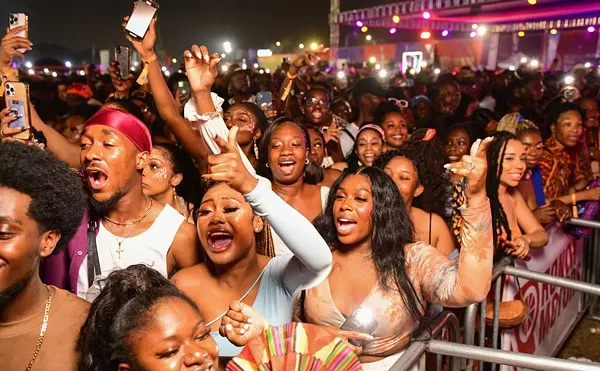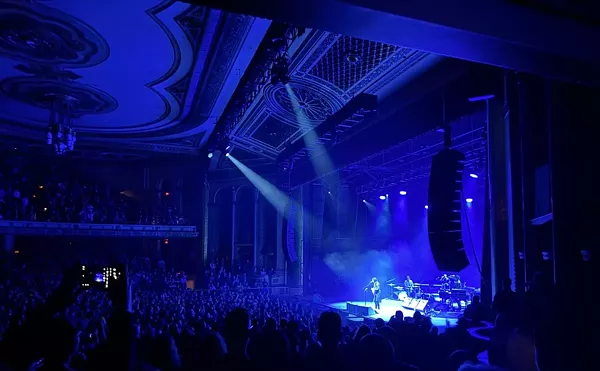
Audio By Carbonatix
[
{
"name": "GPT - Leaderboard - Inline - Content",
"component": "35519556",
"insertPoint": "5th",
"startingPoint": "3",
"requiredCountToDisplay": "3",
"maxInsertions": 100,
"adList": [
{
"adPreset": "LeaderboardInline"
}
]
}
]
WHO: Interpol with special guest Algiers
WHERE: The Fillmore Detroit
WHEN: May 13, 2015
At Wednesday night’s Interpol show at the Fillmore, the opening act Algiers demonstrated an amazing variety of influence in their music: the rhythms of hip hop, vocals with strong gospel roots, electronic melodies straight out of new wave, and the occasional frenetic shredding of guitars. Sometimes all of those elements were present in the same song. It all blended together pretty well, though occasionally the sheer magnitude of the disparate fusion became overwhelming. The pairing of Algiers with Interpol seemed like an odd choice until I started to hear the post-punk elements mixed in there, too. During more than one of their songs, I found myself expecting the intro to suddenly kick into an ambitious cover of Bauhaus’ “Bela Lugosi’s Dead.” Algiers is an unexpected and distinctly contemporary evolution of post-punk and you should probably check them out, even if only to judge for yourself whether or not such an eclectic combination is really feasible.
Back to the main attraction: Interpol exudes that weary, but still politely determined to rock, kind of vibe that the mid-2000’s seemed to be famous for, and last night’s crowd reflected that energy with a vengeance. The music was not exactly the readily danceable kind, but the audience was still eager to erupt into vigorous shuffling in response to thematic crescendos in the songs. Interpol’s newest album, El Pintor, has rightly been called a return to form for the band, though there’s more emphasis now on intricacy of sound than back during Turn on the Bright Lights. Some of that intricacy seems to have come at the cost of radio-ready hooks. It’s still a net gain for the band, I think. The new songs might not have as much of the immediate catchiness of older hits like “NYC” and “PDA”, but they do have a fantastic tendency of slowly building up and burning their way into your post-punk pleasure centers.
The audience seemed to be divided into two approximately equal groups regarding this shift in the band’s music: one group that cheered and basked in the nostalgia of the well-known hits, and another that seemed transfixed by the band’s new predilection for increasingly progressive elements. I straddled the line between the groups, taking in the fondly remembered jams of my youth while keeping an ear trained on the new direction the band was taking. Divided as we were, everyone seemed to have pretty good time shuffling feet and bobbing heads in the way that only the keenest of low-key indie rockers really know how to inspire.





